In the Intussusception or Intestinal obstruction in young children As the name suggests, it is a very acute disease of the intestine in small children, which can lead to a life-threatening intestinal obstruction. The suspicion of intussusception is usually a medical emergency.
What is intussusception?
.jpg)
© zilvergolf - stock.adobe.com
Under one Intussusception the doctor understands an invagination of intestinal parts into other intestinal sections. As a result of this invagination, the intestinal wall is no longer adequately supplied with blood, the vessels of the intestinal wall are pinched off and parts of the intestine can die. A bowel obstruction can occur.
Intussusception can occur in all areas of the intestine; the obstruction is usually found at the transition from the small to the large intestine. Mostly babies and toddlers up to the age of two are affected. If intussusception occurs in older children or adults, the causes are different from those in smaller children.
causes
The causes of a Intussusception have not yet been fully clarified. Doctors suspect disorders of the intestinal motor skills (peristalsis). In younger patients, doctors have found that the peristalsis is too violent and uncontrolled. In older children or adults, a tumor, inflammation or bleeding usually triggers peristalsis disorders and thus intussusception.
Mechanical stimuli in the intestine can also be considered as a cause. These include, for example, worms, hardened feces, gallstones, tumors or swallowed foreign bodies.
In addition, invaginations and entanglements, such as volvulus (intestinal entanglement), intestinal polyps or diverticula in the intestine (diverticulosis) are also known to be the cause.
Ultimately, intussusception can also arise as a result of complications after operations or abdominal wall ruptures (hernias).
Symptoms, ailments & signs
Intussusception manifests itself initially as strong, colicky stomach cramps, which usually occur suddenly. Affected children have severe pain and express this through crying, screaming and the typical relieving posture with legs drawn up. Usually gastrointestinal complaints such as vomiting and nausea are added.
First the stomach contents and later the bile are vomited. The skin is pale and covered in cold sweat. Affected children are also nervous and anxious, and in severe cases they can have a panic attack. The pain attacks occur in labor-like phases that vary greatly in intensity.
This allows the symptoms to subside completely, only to reappear after a few minutes or hours. In severe cases, shock can occur. The bowel movement is normal at the beginning and takes on a jelly-like consistency over time. The stool is often bloody or slimy and can smell unpleasant.
If an intestinal obstruction occurs, this can be recognized by a bloated stomach. Fever symptoms also appear relatively quickly. Then there is an increased temperature, chills and a severe feeling of illness. Due to the severity of the symptoms, an emergency doctor must be called immediately in the event of intussusception.
Diagnosis & course
At the beginning of the diagnosis there is of course the questioning of the patient or the parents (since the patients are usually still very young). The progression of the abdominal pain is an important indication for the diagnosis. Very painful and painless phases are very typical. During palpation, the doctor can feel roller-like induration in the lower abdomen. The doctor can also often feel the turned-in piece of intestine. The typical pain and the tactile findings corroborate the findings of intussusception. The suspicion is checked with an ultrasound scan.
In the phases characterized by pain, it is typical that the pain occurs very sharply and suddenly. The children often writhed under the colic and first vomit stomach contents, later also bile and then often stool, because the intestinal contents can no longer take the normal route due to the invagination.
The children show pale skin and are anxious. Because of the severe pain, the little patient may also show signs of shock.
The intestinal loops are inflated, the abdomen is distended, there are initially more intestinal noises, later these are absent. If the intestinal invagination persists, raspberry jelly-like mucus emerges from the anus. Infants show high-pitched screams and attractively draw their legs. They usually cannot be calmed down and are pale grayish. The chance that an intussusception will resolve itself exists, but it is very small.
Complications
A bowel obstruction in small children can be life-threatening and must therefore be examined and treated by a doctor in any case. In the worst case, the patient may die without treatment. Those affected primarily suffer from very severe abdominal pain. These usually appear very suddenly and are extremely strong.
Furthermore, there is sweat and vomiting. Those affected look very pale and exhausted. There are also noticeable and unusual noises in the intestines. Unusual mucus, which is different from feces, can also finish speaking from the anus. The everyday life of the person affected is significantly restricted by the intestinal obstruction in small children. Furthermore, the severe pain can also lead to a state of shock.
Treatment must be carried out immediately by a doctor. Usually there are no complications and the complaints can be resolved relatively quickly and easily. Only in severe cases may a surgical procedure be carried out in which part of the intestine is removed. However, the life expectancy of the patient is not restricted if the treatment is successful.
When should you go to the doctor?
If the child suffers from digestive problems, a doctor is needed. If you suddenly experience severe abdominal pain or cramps in the upper body, medical examinations should be initiated. If you vomit, sweat and appear pale, a doctor is recommended. If the limbs are cold, pale and cold sweat, the child is suffering from an illness that requires treatment. If unusual bowel noises occur, if there is constipation, a drop in performance or the child becomes listless, a doctor should be consulted. In the case of severe tiredness, refusal to eat, secretion of mucus and malaise, medical examinations are necessary to determine the cause.
If there is a fever, inner restlessness, sleep disturbances, a feeling of illness or increased irritability, a doctor's visit is required. Since intussusception can lead to a life-threatening condition, it is advisable to consult a doctor at the first symptoms. If the symptoms persist for several days, the state of health worsens immensely. Usually the symptoms that are present spread within a few hours. Treatment must be given as soon as possible, as organ failure and death can occur without medical intervention. If you lose consciousness, contact an emergency doctor so that the child can receive intensive care.
Treatment & Therapy
Is the Intussusception Even in the early stages, the doctor can try manually to loosen the intestinal obstruction with a special massage. An enema can also help in this early phase. With the pressure of the enema liquid, the doctor tries to push the bowel back into the correct position. The enema is performed under ultrasound control so that the doctor can immediately check whether the intestine is open again.
If the doctor cannot solve the intussusception with external massage or an enema, surgery is necessary. Otherwise the intestinal piece with poor or no blood supply dies. The patient is in a life-threatening situation, as bacteria can now also enter the abdominal cavity through the perforated intestine and trigger peritonitis. This can lead to a life-threatening circulatory and shock situation.
An operation is definitely necessary even if the intussusception is very high in the intestine, i.e. in the small intestine area. The aim is to keep the intestine complete. As a rule, this succeeds without complications. In the case of very advanced intestinal invasions, however, the doctor may have to remove part of the intestine during the operation.
You can find your medication here
➔ Medicines for stomach ailments and painOutlook & forecast
Intussusception can have very different prognoses. This depends on the duration of the intestinal obstruction, any damage to the tissue, the extent of any swelling and possible treatment damage. Basically, however, the prognosis is good if the intestinal obstruction is treated quickly in small children.
If treated, however, there is a very high risk of recurrence of intussusception in around 5 to 15 percent of affected small children. Nevertheless, it should be mentioned that a quickly treated intestinal obstruction usually has no consequences. However, conservative treatment can, in very rare cases, lead to intestinal perforation, which worsens the prognosis.
This is different with a persistent, untreated intestinal obstruction in small children. Intestinal tissue can die here or inflammation and further colic occur. Again, the prognosis depends on the speed of treatment. If intestinal tissue has already died, an operation must be performed, otherwise peritonitis will occur. In the worst case, this can lead to sepsis.
Basically, intussusception can endanger life. This becomes acute - depending on the person and the damage - after hours or days. That is why it is so important to have an intestinal obstruction treated as quickly as possible so that the prognosis remains the best possible.
prevention
A Intussusception should always be treated by a doctor as soon as possible, as earlier therapy greatly improves the chances of recovery. Early medical intervention also greatly reduces the risk of peritonitis. For children, preventive measures should also be taken to ensure that they exercise a lot, do sports and get a high-fiber diet. In addition, attention should be paid to worms in stool in children.
Aftercare
In most cases, the affected person has very few or even no special follow-up measures available for intussusception. The disease must be recognized very early by a doctor so that a further worsening of the symptoms can be prevented. Self-healing cannot occur, whereby intussusception can in the worst case lead to the death of the child.
The parents should therefore consult a doctor with the child at the first signs and symptoms of the disease. The treatment itself usually takes the form of a massage or surgery. The person affected should definitely rest after such an operation and take care of their body. Here, exertion or stressful activities should be avoided in order not to unnecessarily burden the body.
Frequently, regular checkups and examinations by a doctor are necessary even after a successful operation in order to detect further inflammation or damage to the intestine at an early stage. The further course of intussusception depends very much on the severity of the disease and also on the time of diagnosis, so that a general prediction can usually not be made.
You can do that yourself
Intussusception is a medical emergency in which there are no acute options for self-help. In this case, however, parents can ensure that they drink enough water, for example by giving them tea or water. Otherwise there is a risk of dehydration. Painkillers should only be given in consultation with a doctor. However, these measures in no way replace medical treatment. They only have a supportive and complementary effect.
The everyday life of the affected small children is significantly restricted by the pain during intussusception. If the disease lasts longer or occurs repeatedly, the affected child can also experience psychological complaints, feelings of shame, fear, depressive moods and eating disorders. In such cases, parents should try to calm the child down and take away fears.
Psychotherapeutic support should also be considered in the case of serious emotional complaints. Since intussusception can also cause repeated relapses, it is also important to observe the child's condition after an illness and to prevent a new illness through diet and exercise.

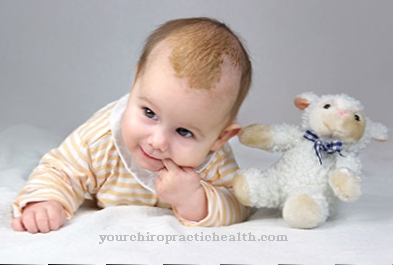
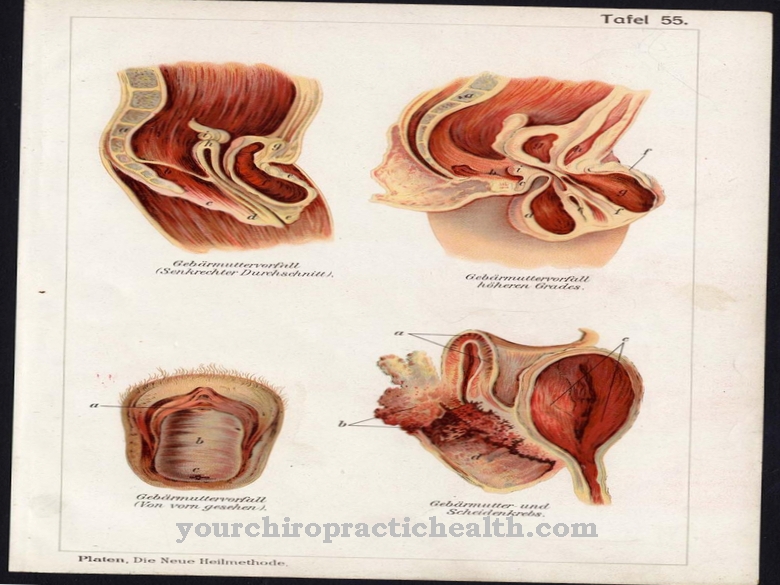
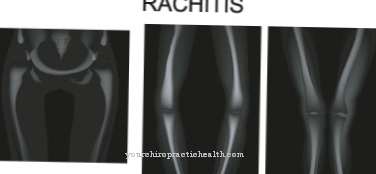
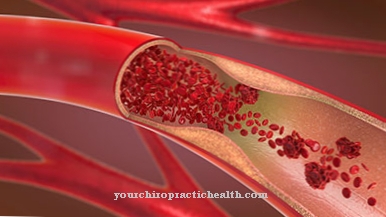
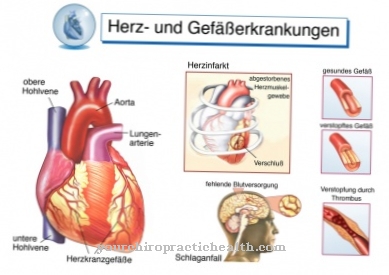
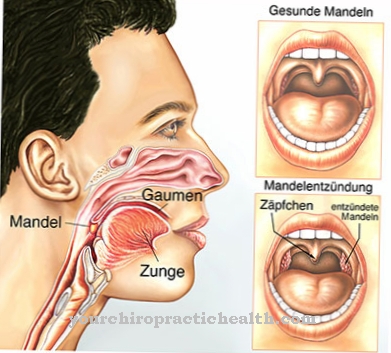

















.jpg)



